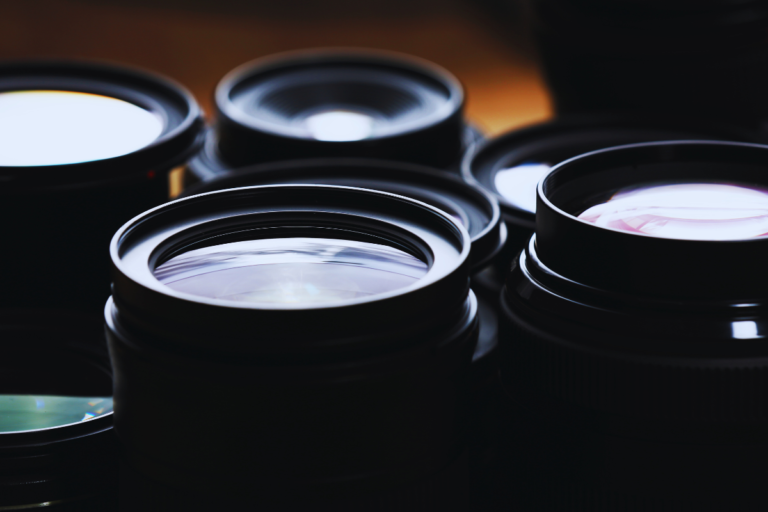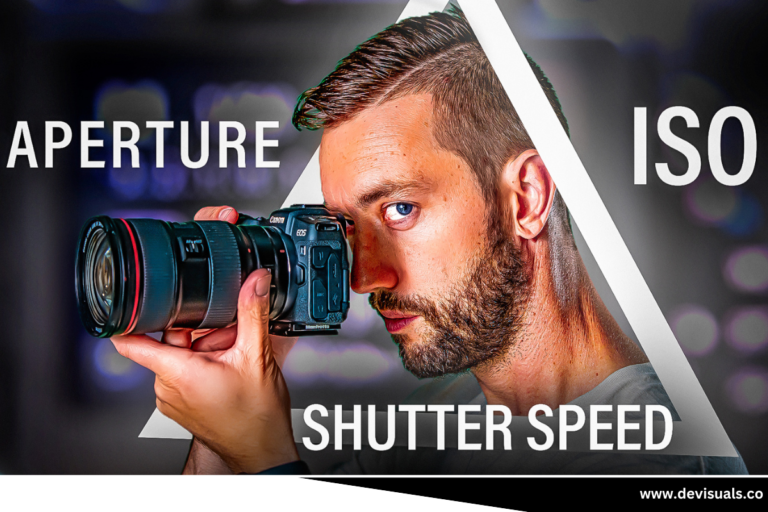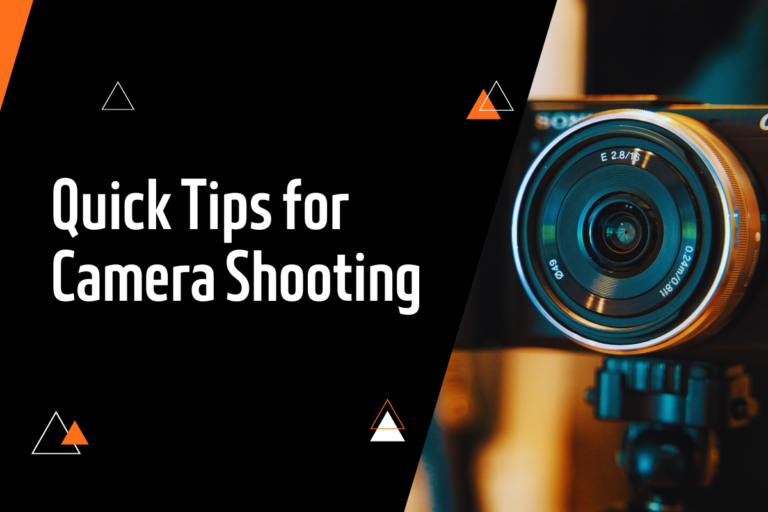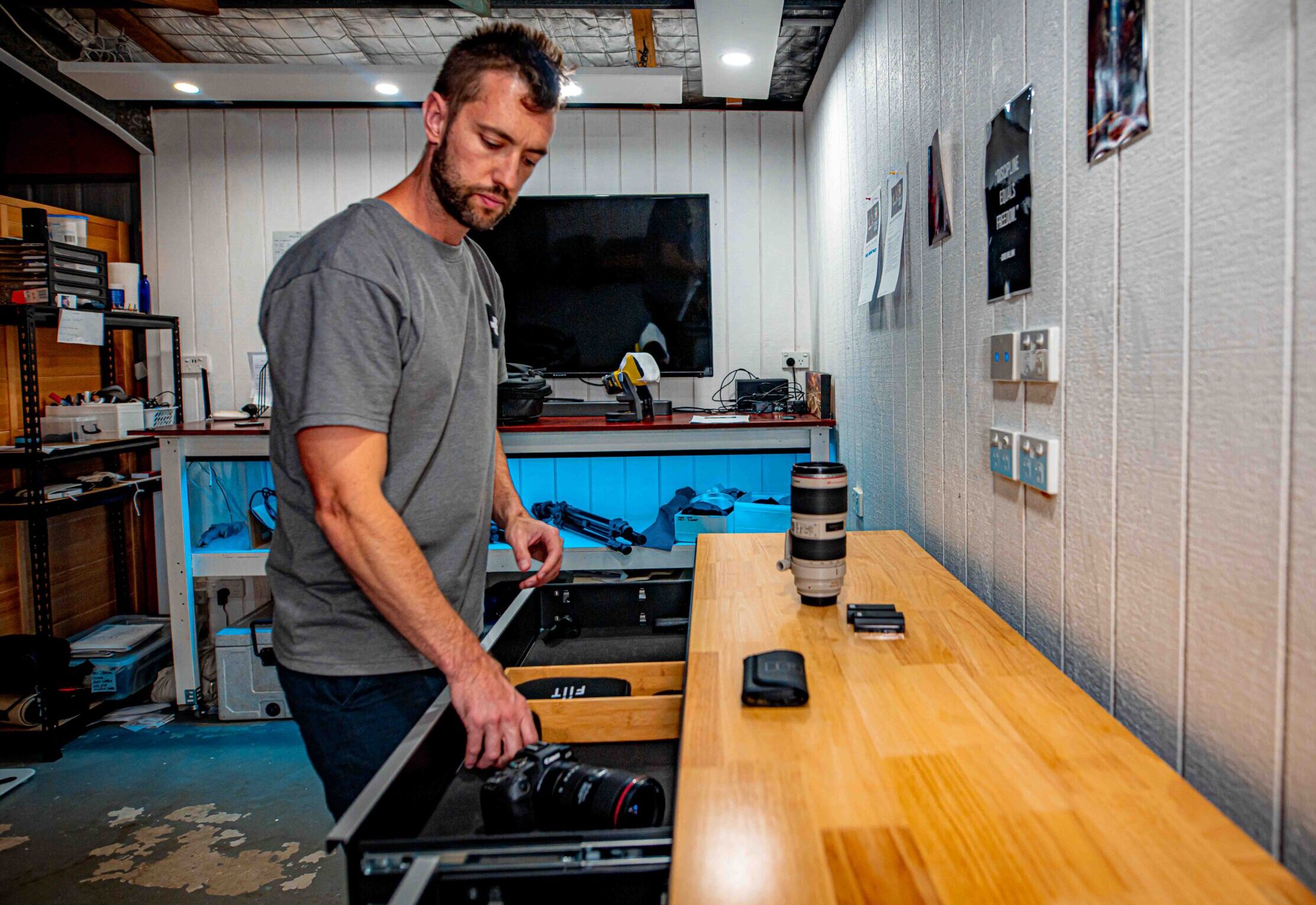In the world of videography, Achieving professional-quality film that enthralls and engages viewers requires careful the best camera lens selection. The lenses you choose can have a big impact on the visual tale you convey in movies, documentaries, ads, or vlogs. Regarding narrative and aesthetics, each type of lens has its own advantages; telephoto substitutes for close-ups and wide-angle lenses for dramatic landscape shots are only two examples. To maximize creativity and production value, it’s important to understand how different lenses work and how they affect the look and feel of your videos overall. Notion template is also an important tool for creating mindblowing videography. In this content, I’ll cover the key elements and suggested techniques for choosing the best camera lenses designed specifically for videography, empowering you to elevate your projects to new heights of cinematic quality. Let’s discuss.
Sigma 20mm f/1.4
The Sigma 20mm f/1.4 DG HSM Art lens is among the best camera lenses for both photographers and videographers. For this reason, it’s great for filming, particularly in tough environments like diving:
Broad Aperture: The f/1.4 aperture offers outstanding low-light performance and depth of field control, adapting to a variety of illumination conditions experienced during dives.
Sharpness and Image Quality: This lens is renowned for its superb optical performance, which enables it to take distortion-free, sharp images even at wide apertures, an essential characteristic for capturing underwater details.
Durability: The weather-sealed construction and robust design of the Sigma 20mm f/1.4 Art lens provide it with resistance against moisture and dust, allowing it to withstand the harsh conditions of underwater photography.
Wide Angle Perspective: The 20mm focal length provides a wide angle that is ideal for taking pictures of expansive underwater scenes, reefs, and marine life without having to get too near, which will disturb the environment as little as possible.
Smooth and Silent Autofocus: The Hyper Sonic Motor (HSM) ensures rapid, accurate, and silent autofocus performance when smooth focus transitions are needed for video recording.
Compatibility: The mounts are available for major camera systems (Canon, Nikon, Sony, etc.) and are certified to work with a wide range of cameras used by videographers.
To establish the mood and provide context for a film, interior shots, and setting scenes are crucial. The Sigma 20mm f/1.4 lens skillfully captures wide, sweeping vistas of outer landscapes or interior spaces, giving opening sequences of documentaries and movies a theatrical feel.
Low-Light Environments: The f/1.4 aperture of the Sigma 20mm lens comes in very handy when shooting images that need to be captured in low light, such as dimly lit interiors or nighttime settings. With sufficient light input, videographers can avoid using excessive artificial illumination while maintaining a tiny depth of field and producing crisp, well-exposed footage.
Talks and Up-Close Shots: The Sigma 20mm f/1.4 is a wide-angle lens, but it may also be used for medium-to-close-up shots in documentary or conversational settings. Filmmakers can use its somewhat broader view than standard portrait lenses to record subjects in their natural surroundings while maintaining a realistic perspective.
Action & Movement: Smooth tracking shots and dynamic movements are possible when using the Sigma 20mm f/1.4 lens on a stabilizer or gimbal. Its broad field of vision keeps subjects in the frame and gives them a sense of depth and motion while shooting action scenes or fast-paced scenarios.
Creative Depth of Field Effects: With the large f/1.4 aperture, filmmakers may create spectacular depth of field effects by focusing on specific subjects and obfuscating background details. This function adds visual interest and a cinematic storytelling approach to video projects, increasing their total production value.
Versatile Usage Throughout Genres: A flexible and excellent optical instrument, the Sigma 20mm f/1.4 lens may be used for a variety of videography genres, including narrative films, music videos, documentaries, and promotional material. Its sharpness, color correctness, and adaptability in challenging lighting conditions make it the first choice for a lot of filmmakers.
When shooting underwater, make sure you use the Sigma 20mm f/1.4 DG HSM Art lens with the appropriate underwater housing to safeguard both the lens and your camera gear. Its broad aperture, sharpness, and robustness make it a fantastic choice for capturing stunning underwater video footage. For the above reason, it is considered one of the best camera lenses ever for videography.
24mm-70mm 2.8f camera lens
Because of its quick aperture and customizable zoom range, the 24-70mm f/2.8 lens is the best camera lens which is an extremely versatile option for filmmakers working in a variety of recording circumstances.
It’s a well-liked choice for the following reasons:
Flexibility Its operational range extends from 24mm wide-angle to 70mm intermediate telephoto, allowing you to capture a range of shots without constantly changing lenses.
Quick Aperture: The constant f/2.8 aperture across the zoom range allows for excellent control over depth of focus and low-light performance. For filmmakers who often work in difficult lighting situations or who need to achieve the bokeh (blurred backdrop) look, this is essential.
Image Quality: These lenses are frequently constructed with high-quality optics to ensure sharpness and clarity across the zoom range. They improve video footage by bringing out the details with clarity by lowering distortions and aberrations.
Durability: Professional-grade lenses in this category are often designed to withstand severe use. They often include weather-sealing to protect against dust and moisture, therefore they are suitable for difficult outdoor shooting circumstances.
Effectiveness of Autofocus: Videography demands fast and accurate autofocus. Many 24-70mm f/2.8 lenses have advanced autofocus systems that enable smooth focus adjustments while recording.
Stabilization: Certain models may have optical image stabilization (OIS) or vibration reduction (VR) devices installed to aid lessen camera wobbling when shooting handheld or in motion. Video footage is smoother as a result of this.
Popular examples of 24-70mm f/2.8 lenses for videographers include:
Canon EF 24-70mm f/2.8L II USM: This lens, which pairs well with both mirrorless cameras and Canon DSLRs with adapters, is renowned for its exceptional image quality and robust construction.
Nikon AF-S NIKKOR 24-70mm f/2.8E ED VR: Equipped with vibration reduction technology, this lens provides up to 4 stops of image stabilization for Nikon cameras.
Sony FE 24-70mm f/2.8 GM: This high-quality, fast-focusing lens is made to accommodate Sony E-mount full-frame cameras.
Tamron SP 24-70mm f/2.8 Di VC USD G2: Equipped with Tamron’s Vibration Compensation (VC) system, this lens is ideal for stabilizing handheld video.
Vloggers consider these lenses to be essential tools for high-end video production due to their remarkable optical performance, versatility, and ability to handle a range of filming scenarios.
70mm -200mm 2.8f camera lens
Again, A 70-200mm f/2.8 lens is one of the best camera lenses which is a common tool carried by videographers because of its fast aperture and wide zoom range, which enable them to record a wide range of subjects and situations.
It is so highly respected for this reason:
Zoom Range: Offers an adjustable focal length between 70 and 200 mm, allowing videographers to capture subjects both close up and far away without changing lenses.
Fast Aperture: The f/2.8 constant aperture in the zoom range ensures good low-light performance and a shallow depth of field, making it ideal for producing bokeh, blurred backgrounds, and isolating subjects.
Image Quality: Professional-grade lenses in this category often include high-quality optics with features like Fluorite or Extra-low Dispersion (ED) elements to reduce aberrations and maintain sharpness and clarity across the zoom range.
Create Quality: These lenses are weather-sealed to protect against dust and moisture, making them ideal for challenging outdoor photography conditions. They are designed to withstand professional use.
Videography requires the ability to focus discreetly, precisely, and fast. Sophisticated focusing motors are used in several of the 70-200mm f/2.8 lenses, enabling precise and seamless focus tracking essential for photographing moving subjects.
Stabilization: Some models include optical image stabilization (OIS) or vibration reduction (VR) technologies to help lessen camera wobbling when shooting handheld or filming moving subjects. Video footage is smoother as a result of this.
Popular examples of 70-200mm f/2.8 lenses for videographers include:
• Canon EF 70-200mm f/2.8L IS III USM: This lens is well-known for its outstanding image quality, rapid autofocus, and effective image stabilization. It is compatible with Canon DSLRs and mirrorless cameras with adapters.
• Nikon AF-S NIKKOR 70-200mm f/2.8E FL ED VR: Equipped with Nikon’s most advanced VR technology, this lens provides up to 4 stops of picture stabilization together with exceptional optical performance.
• Sony FE 70-200mm f/2.8 GM OSS: This lens, made specifically for Sony E-mount full-frame cameras, boasts fast focusing, excellent resolution, and optical SteadyShot stabilization.
The Tamron SP 70-200mm f/2.8 Di VC USD G2 lens is equipped with Tamron’s Vibration Compensation (VC) technology, which yields sharp images and steady video recording.
Optical performance, versatility, and the ability to record a wide range of scenes from sports and events to portraits and wildlife make these lenses a videographer’s first choice and essential tools for high-end work.
Nifty 50mm 1.4f camera lens with its effectiveness
The term “nifty fifty” typically refers to 50mm lenses with wide apertures like f/1.4 or f/1.8, known for their versatility, affordability, and effectiveness in various photographic situations.
The reasons a 50mm f/1.4 lens comes in handy are as follows:
Wide Aperture for Low Light: Because it lets in more light, the f/1.4 aperture is an excellent choice for low-light conditions. This function can help freeze motion and reduce camera shake by enabling faster shutter speeds and less need for a flash.
Shallow Depth of Field: A shallow depth of field is another effect of the wide aperture that aids in isolating subjects from the background that has a pleasing blur (bokeh). The subject is emphasized by this effect, which makes it particularly appealing for portraiture.
Versatility: A full-frame camera’s 50mm lens length (or something equivalent on APS-C and Micro Four Thirds systems) roughly mimics the viewpoint of a human eye. It is suitable for a wide range of photography genres, such as street and portrait photography, landscape photography (with crop sensors), and close-up macro with close-up adapters.
Small and Lightweight: 50mm lenses are often small and light, which makes them easy to carry and perfect for vacation or casual shooting.
Affordability: Compared to zoom lenses and certain other prime lenses, 50mm f/1.4 lenses are frequently less costly while still offering good image quality and performance.
Speed and Responsiveness: Many 50mm f/1.4 lenses come with fast and accurate internal focusing systems, which come in handy for capturing moving subjects or making last-minute adjustments in a variety of shooting situations.
Features of the Video: Filmmakers can achieve cinematic effects with a 50mm f/1.4 lens thanks to its wide aperture and smooth background blur. As part of their specially designed features for videos, certain models come with silent autofocus motors and smooth manual focus rings.
All things considered, a 50mm f/1.4 lens is a popular choice for both photographers and videographers due to its good optical performance, cost, and versatility. You can take excellent pictures with a nifty fifty in many different settings, including street scenes, portraits, and even movies.
A 50mm f/1.4 lens can be a great choice for videographers due to its wide aperture and versatile focal length. Here are a few options that are popular among videographers:
Canon EF 50mm f/1.4 USM:
o Known for its sharpness and powerful low-light performance. The Ultrasonic Motor (USM) provides silent and smooth autofocus, which is useful for recording videos. o Compatible with Canon cameras, both full-frame and APS-C.
The Nikon 50mm f/1.4G AF-S Nikkor:
it boasts a fast aperture paired with superior image quality.
Its Silent Wave Motor (SWM) enables swift and silent autofocusing.
o Compatible with Nikon cameras, both full-frame and APS-C.
FE 50mm f/1.4
it is designed to suit Sony E-mount full-frame cameras, the Sony ZA.
o Zeiss lenses for exceptional image quality. Fast and silent focusing that is ideal for recording.
Sigma 50mm f/1.4 DG HSM Art:
o Sony E, Canon EF, Nikon F, and Sigma SA mounts are compatible.
o A part of the well-known Art series from Sigma,
it is well-known for its superior optical performance.
• Offers smooth, precise autofocusing, perfect for recording.
For video, a 50mm f/1.4 lens should consider factors such as system compatibility, optical quality (bokeh and sharpness), and focusing performance (smooth and silent are preferable). Additionally, look for lenses that have the least amount of focus breathing possible, as this could affect the stability of the framing when filming.
35mm lens
When selecting a 35mm lens for videography, there are several factors to consider to ensure it meets your needs:
Aperture: A wide maximum aperture (e.g., f/1.8 or f/2.8) allows for better low-light performance and more control over depth of focus, which is necessary to get that cinematic look in movies.
Image stabilization: it is especially important if you want to record handheld or without any stabilizing equipment. It is possible to smooth out the film by using in-body or optical stabilization.
Autofocus: Consider carefully if you need fast and silent autofocus if you wish to use a camera that offers continuous autofocus while recording videos.
Build Quality: Look for strong, weather-sealed lenses if you plan to take pictures in a range of weather conditions.
Check if the lens is compatible with the mount on your camera (such as the Sony E-mount or the Nikon F-mount, for example).
Based on these considerations, here are some popular 35mm lenses known for their quality in videography:
50mm lens
A 50mm lens is a popular choice for videography due to its versatility and ability to capture scenes with a natural perspective similar to what the human eye sees.
Here’s how a 50mm lens can be beneficial for videography:
Natural viewpoint: A 50mm lens on a full-frame camera creates a viewpoint that is very close to what the human eye sees. This makes it capable of capturing captivating and lifelike scenes that make viewers feel as though they are a part of the action.
Versatility: The 50mm focal length can be utilized for medium photographs, interviews, and in certain cases, close-ups, depending on the minimum focus distance of the lens. It is effective for narrative filmmaking, interviews, commercial videos, and documentaries.
Performance in Low Light: Many 50mm lenses have high apertures, such as f/1.8 or even f/1.4, which helps them perform well in low light. With the help of this feature, you may take nighttime or indoor photos without the need for additional lighting.
Shallow Depth of Field: 50mm lenses with wide apertures can produce a shallow depth of field by isolating subjects from their surroundings and giving films a more theatrical feel. This effect creates a visual separation between the objects in the foreground and background or highlights the main issue.
Compact and Lightweight: 50mm lenses are often lighter and simpler to handle than larger prime or zoom lenses, making them more convenient to use on location. For spontaneous films or filming in challenging settings, its portability is useful.
Cost-Effective: Since 50mm lenses are usually less expensive than telephoto or cine lenses, filmmakers on a low budget can still use them to achieve professional-looking shots.
All in all, a 50mm lens is a versatile tool that may raise the standard and creativity of filmmaking since it offers a realistic perspective, exceptional low-light performance, and the ability to create striking shallow depth-of-field effects.
85mm lens
An 85mm lens is another popular choice for videography, offering distinct advantages that make it suitable for various types of video production.
Here’s how an 85mm lens can be beneficial for videography:
Portrait and interview photography: 85mm is widely considered the ideal lens length for these kinds of shots. Filmmakers could utilize it to capture people at an angle that highlights them, minimizing background detail and drawing attention to the main topic. It’s particularly useful for creating engaging and personal videos as a result.
shallow field depth Many 85mm lenses have large maximum apertures, like f/1.8 or f/1.4. Filmmakers can concentrate on the topic while purposefully obscuring the background to get a very shallow depth of field. This effect is useful for focusing spectator attention and creating cinematic looks.
Isolation & Compression: Due to its longer focal length, an 85mm lens can reduce the amount of space between foreground and background objects. With the help of this compression technique, you can optically arrest compositions by separating subjects from distracting backdrops.
Low-Light Performance: Because of the high aperture of an 85mm lens, which makes it perform well in low light, filmmakers can shoot in dimly lit situations without sacrificing image quality. Sequences that must be shot indoors, at night, or in locations with little natural light can benefit from this function.
Versatility: The 85mm lens may be employed in videography to provide visually striking medium- to close-up shots, even though it is primarily used for portraits. It functions effectively in documentaries, music videos, and narrative movies when the primary topics are emotion and character connection.
Professional Look: The tiny depth of field and compression effect of an 85mm lens contribute to the polished, theatrical look of videos. It helps filmmakers achieve a professional image that enhances the story and visual impact.
Stunning bokeh, or the blurring of out-of-focus areas, is a feature of many 85mm lenses that enhances the feeling of cinematic immersion and gives films an eye-catching background blur.
In general, an 85mm lens is highly valued in the field of videography because of its exceptional capacity to produce captivating close-ups, dramatic scenarios, and portraits combining background blur, low light performance, and sharpness. For filmmakers who want to give their video creations more depth and visual impact, it’s a useful tool.
The Panasonic Lumix S 18mm F1.8
The Panasonic Lumix S 18mm F1.8 is a versatile lens that is ideal for use with Panasonic full-frame mirrorless cameras, including the Lumix S series. Considering the following aspects when using this lens for filmmaking:
Wide-Angle Perspective: With its wide field of vision, the 18mm focal length is a good choice for capturing establishing shots for films or large-scale scenery and landscape photography.
Low-Light Performance: The big maximum aperture of the F1.8 lens allows for excellent low-light performance. This reduces the need to significantly increase the ISO when capturing inside scenes or nighttime footage to maintain video quality.
Smooth Focus Control: For videographers, precise and fluid focusing is crucial. The lens likely features a smooth-changing manual focus ring that allows you to pull focus precisely when taking a video.
Weather-Sealed Design: This lens has weather-sealing, just like a lot of the Lumix S series lenses. When filming outside, this feature helps protect the lens from environmental factors like moisture, dust, and other particles.
Create Quality: It is expected that the lens will be robustly built, providing longevity for regular use in filming locations. This incorporates a strong construction that will withstand the demands of both amateur and professional videographers.
Optical Quality: Despite being designed primarily for still photography, the lens’s optical quality should translate well to video, offering clarity throughout the frame and minimizing optical aberrations.
Compatibility & Mount: Because the lens is specifically designed for the L-mount system, it is guaranteed to function with Panasonic Lumix S series cameras. It allows you to choose the type of camera body you want and can be used with other Leica and Sigma L-mount cameras.
Bokeh and Depth of Field: The F1.8 aperture helps create a pleasing bokeh and shallow depth of field in addition to being helpful in low light. These components can be creatively used in videos to create a dramatic effect or to isolate specific subjects.
All things considered, the Panasonic Lumix S 18mm F1.8 is the best camera lens for filmmakers who want to expand their arsenal with a wide-angle prime. Its large aperture, wide-angle vision, and high build quality make it ideal for a range of videography uses, including documentary-style filming and dramatic narratives.
Crazy lenses
“Crazy lenses” is a term used by videographers to describe lenses with peculiar characteristics or traits that encourage artistic creativity in both film and videography.
The following considerations may be useful for videographers using such lenses:
Imaginative Effacts In the optical realm, bizarre lenses can produce unusual shapes, swirls, or extreme aberrations. These effects can enhance the story or ambiance of a video by giving it a dreamy or surreal vibe.
Vintage and Character Lenses: Some videographers look for ancient lenses or lenses with certain optical faults (such as lens flares, chromatic aberrations, or soft focus) to create a vintage or artistic feel in their videos.
Anamorphic Lenses: Anamorphic lenses are specialized lenses that have a wide aspect ratio and produce noticeable horizontal lens flares. They are widely used in filmmaking to provide a shallow depth of field and a dramatic bokeh.
Lens Adapters and Changes: Videographers sometimes use lens adapters or changes to create odd effects. These include attaching prisms, and filters, or performing do-it-yourself lens alterations to alter the optical behavior of the lens.
Lens Adapters and Modifications: Lensbaby and Tilt-Shift lenses allow filmmakers to add little effects, intentionally blur certain parts of the image to generate a certain artistic impression, or focus on specific areas of the frame.
Macro and Close-Up Lenses: For filmmakers focusing on macro or complex shots, specialty lenses designed for close-up photography can provide unique vistas and characteristics that are unseen to the untrained eye.
Experimental and Handmade Lenses: Several filmmakers experiment with handmade lenses or unconventional optics to create distinctive effects or a distinct visual aesthetic that sets their work apart.
Digital Effects and Post-Production: In addition to physical lenses, videographers often use digital effects and post-production techniques to further enhance or edit movies. With merely physical lenses, they would not be able to create effects that are either unrealistic or impossible.
Ultimately, the choice of “crazy lenses” for videography depends on the creative vision of the filmmaker and the specific aesthetic or storytelling goals of the project. Experimentation with different lenses and techniques can lead to innovative and visually captivating results in videography.
Glass lens
For videographers, a glass lens is the best camera lens which provides several benefits and considerations tailored to the unique requirements of professional filming.
The following are some crucial points to consider:
Optical Quality: It is known that glass lenses have superior optical quality compared to numerous plastic lenses. They often offer better sharpness, clarity, and color reproduction—qualities that are crucial for producing high-quality video with accurate color and minimal optical aberrations.
Durability: Glass lenses are more robust and scratch-resistant than plastic lenses. This perseverance comes in handy during filming, especially in challenging lighting situations or throughout extended takes.
Low Dispersion and Aberrations: High-quality glass lenses are designed to have as little discernible chromatic, spherical, and distortion optical aberration as possible. Videographers can be certain they will obtain precise, crisp photos devoid of unwanted visual distortions by doing this.
Aperture Control: Many high-end glass lenses allow for precise adjustment of the aperture, enabling filmmakers to control light exposure and create specific effects related to depth of focus. It is essential to be able to adjust to shifting lighting circumstances and artistic expression.
Compatibility and Mount Options: Glass lenses are compatible with a variety of camera systems and setups commonly used in videography, as they come in a wide range of focal lengths and mount options. Because of its adaptability, videographers can select lenses that best fit their shooting needs and project specifications.
Specialized Lenses: A vast range of specialized alternatives, including prime, zoom, wide-angle, telephoto, and macro lenses, are available for professional glass lenses. Every kind of lens has a special quality that may be used to capture a variety of images, from wide-angle landscapes to close-ups of minute details.
Lens Filters and Accessories: A variety of lens filters and accessories, including polarizers, ND filters, and lens hoods, are frequently compatible with glass lenses. Filmmakers can employ glass lenses even more imaginatively and adaptably with the aid of these attachments, which let them control reflections, lower glare, and modify exposure settings.
Cost considerations: Although high-quality glass lenses can be more expensive than plastic lenses, they are often a better long-term investment due to their strength, optical performance, and ability to maintain image quality over time.
Glass lenses are preferred by many videographers due to their superior optical performance, durability, and adaptability in creating video content appropriate for usage in professional settings. Videographers should consider factors including optical quality, durability, compatibility with their camera system, and unique shooting requirements.
In Summary,
The best camera lenses are essential to the creative process of videography because they provide a variety of instruments that allow filmmakers to record moments with accuracy, artistic flair, and nuanced storytelling. Every decision affects the visual story, whether it is to choose the robustness and clarity of glass lenses, the adaptability of custom lenses, or the creative possibilities of experimental optics. To broaden their creative horizons, improve the quality of their productions, and ultimately create visually striking experiences that captivate audiences, videographers may make the most of these instruments by learning about the distinct qualities and capabilities of different lenses. Lenses continue to play a crucial role in videography, spurring innovation and expanding the possibilities of visual storytelling as new lenses are developed and technology advances.








